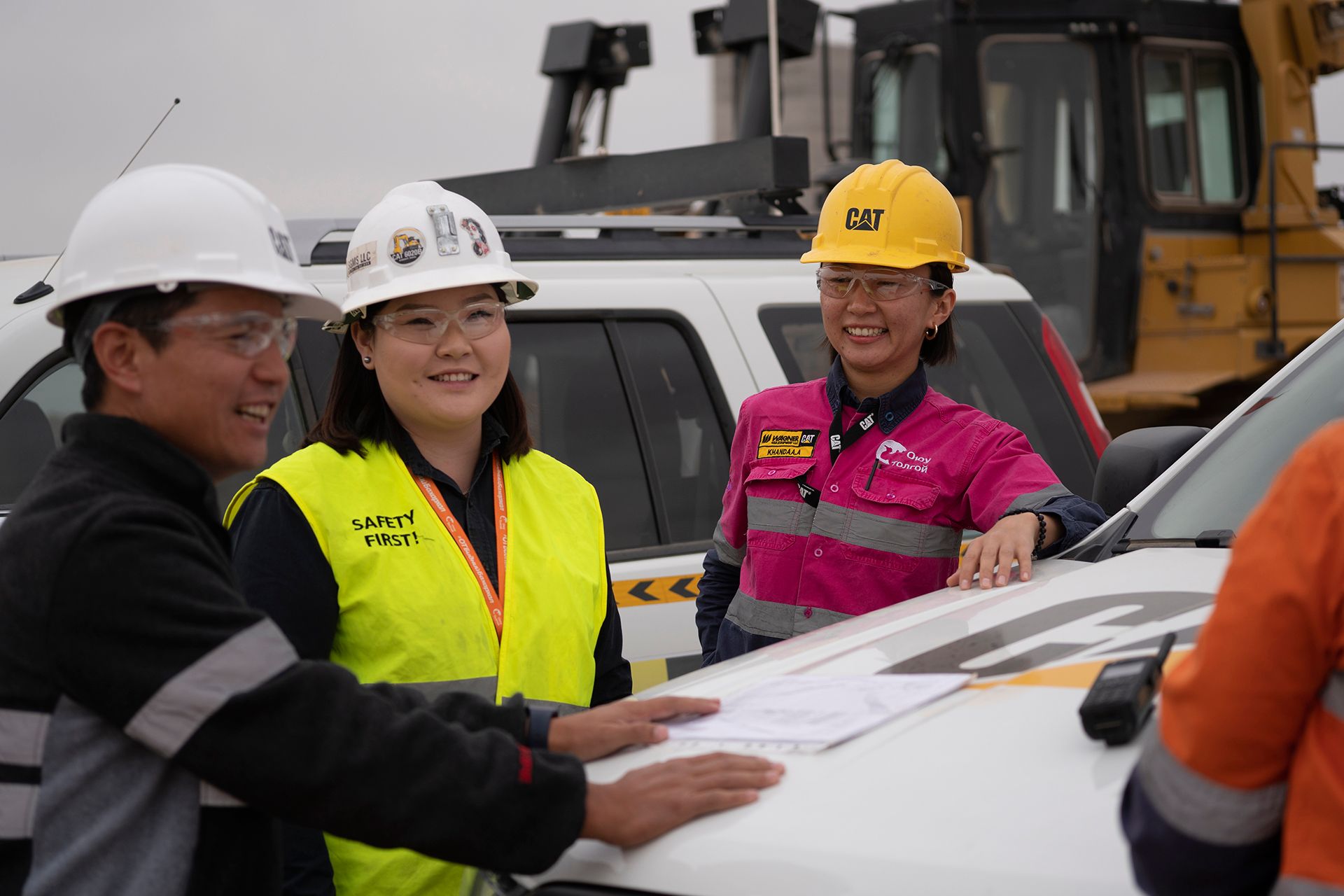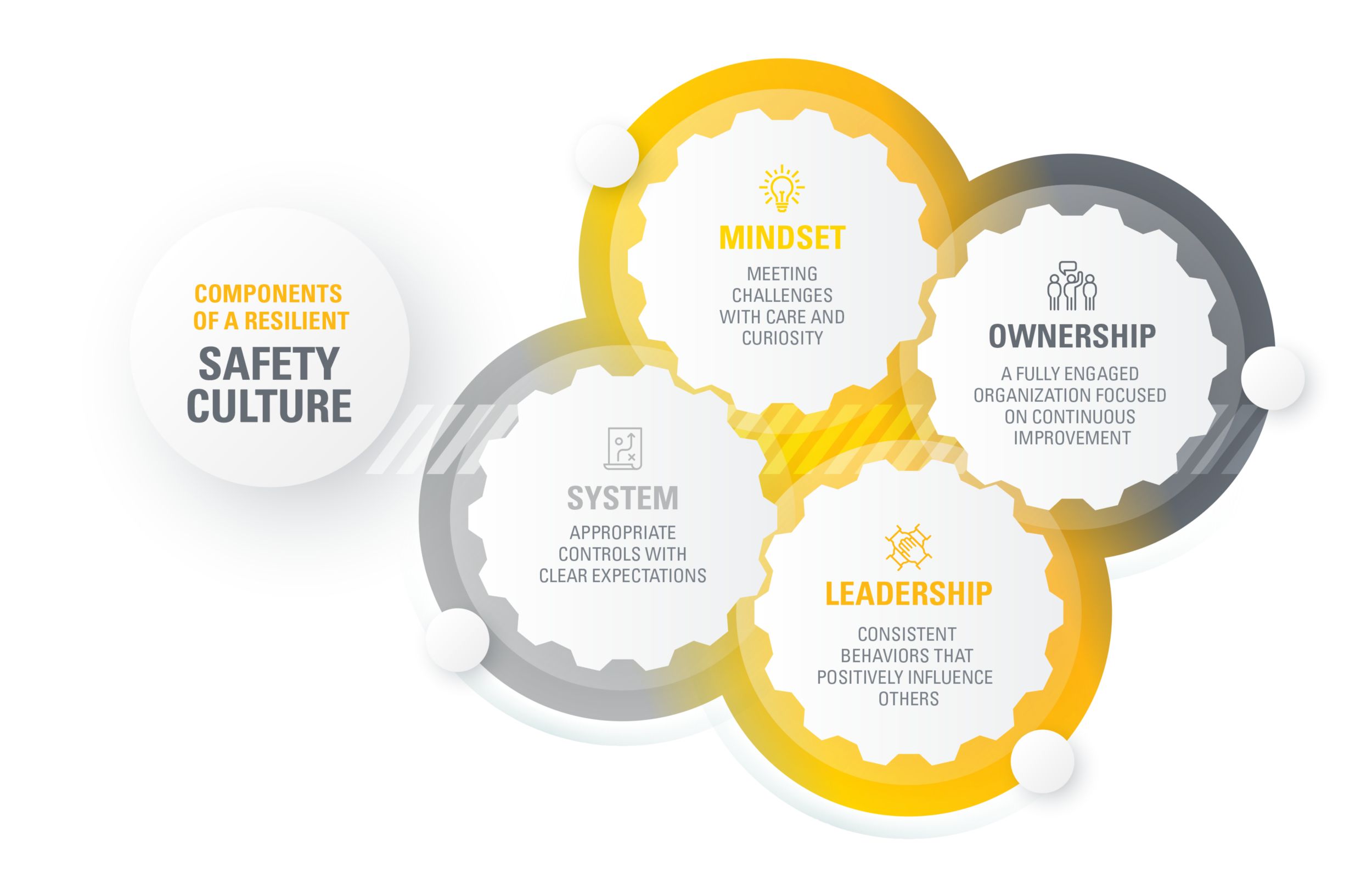

Sign In
Welcome! Sign In to personalize your Cat.com experience
If you already have an existing account with another Cat App, you can use the same account to sign in here
Register Now
One Account. All of Cat.
Your Caterpillar account is the single account you use to log in to select services and applications we offer. Shop for parts and machines online, manage your fleet, go mobile, and more.
Account Information
Site Settings
Security
What’s a Resilient Safety Culture (And How Do You Get It)?
Learn from a Caterpillar Safety Services expert how your site can build a resilient culture of safety
Safety culture exists whether an organization proactively manages it or not. Most simply, your safety culture is reflected by what people do when the boss or the safety manager isn’t watching. They either speak up, or stay silent when they see something or someone working unsafely. They report incidents, or they sweep them under the rug. They stop and ask for help when they don’t have the right tool, or they make do with what they have and hope for the best. They focus more on what people have done right, or what they’ve done wrong.
Managing safety positively and proactively requires a conscious and coordinated effort that considers the complex nature of people working in concert with each other to achieve a variety of production, quality and financial goals every day.
Over the past 50 years, Caterpillar Safety Services has worked with hundreds of organizations striving to build the strongest safety culture possible to keep their people safe. What we’ve learned is that the key to success and sustainability is resilience. A resilient safety culture:

- Resists pressures, both internal and external (such as changes in production rates, customer demands, environmental factors, organizational restructuring), that could cause people to sacrifice their commitment to safety in lieu of these competing priorities.
- Is adaptable and bounces forward from challenges, focused on continuously improving instead of blaming and shaming those who make mistakes.
- Is proactive in putting safeguards in place to prevent serious incidents by learning from expert employees in the field before things go wrong.
If that sounds like what your organization is striving to cultivate, you’re probably wondering what it takes to achieve it. In our experience, it requires focus and development of four interdependent components:
- A safety System with appropriate controls and clear expectations.
- An organizational Mindset that meets challenges with care and curiosity.
- Consistent Leadership behaviors that positively influence others.
- Ownership from a fully engaged organization focused on continuous improvement.

Traditionally, we think about the system when we think about safety. The system includes tools, training and technologies, as well as policies, procedures, metrics and regular safety activities to identify hazards and mitigate risks on the job. Expectations are set for people at each level of the organization, and they are held accountable for if and how they meet them. The system keeps the organization in compliance with government regulations and industry standards. It is absolutely essential, but it’s not enough to ensure a safe workplace.
Anyone who has spent more than a day in any industry knows that it’s not enough to simply write a rule or procedure and expect it to be followed by everyone, everywhere, all the time. It also requires a shared mindset about how challenges are perceived and responded to. A safety-positive mindset values learning over blaming when mistakes are made, and mistakes will inevitably happen, because humans make mistakes. Employees in the right mindset speak up when they see someone doing something unsafe, and respond with respect and gratitude when someone speaks up to them. Before this can happen, leaders must first show they care for their employees to build psychological safety. Employees who feel psychologically safe speak up with concerns, ideas or errors they’ve made to help the team learn and improve.
Safety culture is largely shaped by leadership. The system will only be effective if leaders are saying, doing, measuring and reinforcing what they are supposed to. It’s difficult to maintain a positive organizational mindset unless leaders consistently respond the right way. Leaders have a lot to manage every day and must be trained to drive proactive accountability, connect in meaningful ways with their people, demonstrate commitment to safety, and build trust. A leader who demonstrates these traits will create an environment where employees feel valued and want to be involved in safety, resulting in higher engagement and retention.
Ownership of safety means being fully invested in the whole system and what it produces. When employees and their leaders own safety, they understand why the system exists and respect their place within it. They enthusiastically participate in safety activities, follow processes, and are involved in shaping the activities that create a safe day – not expecting the safety department to do it alone. Empowered employees are engaged employees, creating connectivity and communication channels to ensure the entire organization is part of continuously improving safety. This is what most organizations strive for, and it can absolutely be achieved with the other three components of a resilient safety culture firmly in place.
If your organization would like to cultivate stronger safety culture resilience, or to explore the many solutions available from Caterpillar Safety Services to improve your system, mindset, leadership and ownership, please visit www.cat.com/safety.

Justin Ganschow, MS, CSP, CHMM
Business Development Manager, Caterpillar Safety Services
With 20 years of experience in public health and private industry, Justin Ganschow is a sought-after international keynote speaker and writer on the impact of leadership and human biology on workplace safety and culture. From growing up on a farm, to working as an Environmental, Health and Safety professional in the heavy equipment manufacturing industry, and serving as a consultant to a variety of industries, Justin focuses on the “why” behind the “what” – inspiring frontline employees, leaders, executives and safety professionals alike to think and perform at a higher level. Currently he serves as Business Development Manager with Caterpillar Safety Services.
GET THE LATEST FROM CATERPILLAR MINING DELIVERED RIGHT TO YOUR INBOX


